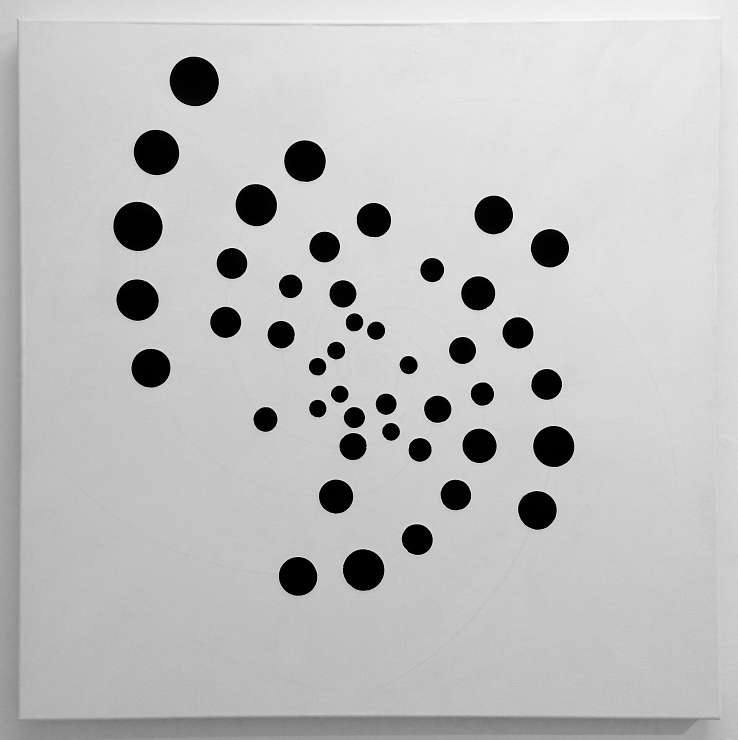Don Satijn
kunstinzicht.nlRubrieken
Introduction to the work of Don Satijn by Inge OrlowskiBasic concepts of the work of Don SatijnLabour, harmony and meaning in the works of Don Satijn By Rutger van HoutenA concise survey of the works of
Don Satijn
By Marcel Teunissen, art historianReflections On work by Don Satijn from the series “Encryptions-Perforations”,2014-2018 By Marijke ten CaatENCRYPTIONS, by Alex HegieBarcodes by Don Satijn
By Marijke ten Caat
The first movement
When you see the work from the series “Encryptions-Perfo- rations” by Don Satijn, minimalism is immediately noticeable. Nothing is too much, everything looks dosed, and the images make a balanced and harmonious impression. From afar, the im- ages remind me of elementary structures, such as galaxies that revolve around powerful black holes, or of a molecular structure. I recognize patterns, but I cannot yet post them, and as the title of this series suggests, these images must contain encrypted information. How do I find the key to this hidden message?
The second movement
The images display the characteristics of a language. Each im- age says something different and that is clearly reflected in the structure and placement of the components in each indi- vidual work. It also shows similarities with a morse code. In morse code, variations in the intermediate positions of sig- nals, words, punctuation marks or numbers are represented. Only here I don’t know the code and the message seems to be hid- den. But it intrigues me immensely and I cannot let it go. What is clear is that the language of forms in this work challenges the sense of seeing to engage in an exercise of thought. It makes a proposal to enter the work in a mental way. I therefore leave these elemen- tary visual aspects, and enter the space that the perforations offer.
The third movement
I break through the holes in the work in a mental way and enter unknown territory. I am invited to investigate and puzzle the im- age. My attention moves across and through the images. Through the depths of the perforations I return to the shape on the front. I follow the lines. I get stuck. I jump from circle to circle. I’m go- ing back into the depths again. I’m taking a different path. I rest in the white field. I zoom out again and look at the patterns in the image. The work mentally challenges you and made me run into mental walls, make me fall and get up and try out different options. But then suddenly that insight comes, a kind of clarity at the cutting edge. As if suddenly a light goes on. An eureka mo- ment that energizes and makes you enthusiastic. Maybe that’s the key; the positive energy that is released when you create inner space, where you at first saw no space, or did not experience it.
The fourth movement
I read the titles of the works, such as ‘What you seek is seek- ing you’, ‘breath is the veil between the worlds’, or ‘no one can steal your thoughts.’ What is striking is that the titles have the same symbolic language as the visual language of the work. The titles are universal truths that can appeal to all of us in a certain way. But here too the words only get a force when you actively use them. The interesting thing is that the titles require an identical active mental approach as the form aspect of the work. You can enter the work through the thought and discover what is hidden in that system. When you actively question and investigate, only then does the movement begin, and only then you can possibly gain an insight that connects you personally.
The radiating center.
A word or symbol always refers to something other than what it is itself. It represents something. In Don Satijn’s work form and language seem to have become one. They refer to each other and the movement of thought is in between. The mental exer- cise to which you are being challenged may therefore be a key. As a mental movement towards a center that can trigger a fire and an insight in yourself and thereby creates energy and space.
Marijke ten Caat.
